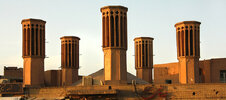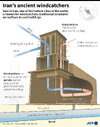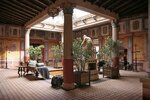Veszna
Padawan Learner
There is a game that my cousin and I have been playing for a while, we call: '4th density STO Earth' .
In everyday life, it is very easy to get lost in a lot of (and more and more) negative news, and we have noticed that this often affects our mood as well. So we remind each other from time to time what a positive planet can be like, with this, we successfully overcome the negativity that broadcast on us and maybe by projecting our thoughts into an imagined positive future, perhaps we too help create a better life. Maybe not in our, but our children's and grandchildren'life.
Every action or object started with a thought, so I invite you to share your thoughts about the future with me if you feel like it.
If you find an image or article that you think 'reminds' you of an STO world, please share it with me.
The purpose of the topic is to focus on the solution.
This could be a thought/knowledge about responsible childbearing, relationships, gardening, architecture...anything related to everyday life, good to humans and the planet.
My first thought/question is how to get rid of this much plastic, which can already be detected in the bodies of newborns?
I remember when I was a child, apples were not wrapped in plastic one by one in the stores, and our Moms came shopping with their own bags and baskets.
I also remember how little garbage we produced (as a small child we were responsible for taking out the garbage). It was enough to empty the trash can once a day. This may still be the case today, but trash cans are getting bigger and bigger.
But imagine a world without plastic. (Maybe a minimum amount is required, I'm not an expert on the subject.TVs, phones, PCs also need plastic, I assume.)
Or is there a process that actually creates healthy plastic?
Or we are able to replace it with something that is better for us and the planet.
Thank you for reading
(and like always, if my message is in a wrong place, please feel free to replace it).
In everyday life, it is very easy to get lost in a lot of (and more and more) negative news, and we have noticed that this often affects our mood as well. So we remind each other from time to time what a positive planet can be like, with this, we successfully overcome the negativity that broadcast on us and maybe by projecting our thoughts into an imagined positive future, perhaps we too help create a better life. Maybe not in our, but our children's and grandchildren'life.
Every action or object started with a thought, so I invite you to share your thoughts about the future with me if you feel like it.
If you find an image or article that you think 'reminds' you of an STO world, please share it with me.
The purpose of the topic is to focus on the solution.
This could be a thought/knowledge about responsible childbearing, relationships, gardening, architecture...anything related to everyday life, good to humans and the planet.
My first thought/question is how to get rid of this much plastic, which can already be detected in the bodies of newborns?
I remember when I was a child, apples were not wrapped in plastic one by one in the stores, and our Moms came shopping with their own bags and baskets.
I also remember how little garbage we produced (as a small child we were responsible for taking out the garbage). It was enough to empty the trash can once a day. This may still be the case today, but trash cans are getting bigger and bigger.
But imagine a world without plastic. (Maybe a minimum amount is required, I'm not an expert on the subject.TVs, phones, PCs also need plastic, I assume.)
Or is there a process that actually creates healthy plastic?
Or we are able to replace it with something that is better for us and the planet.
Thank you for reading
(and like always, if my message is in a wrong place, please feel free to replace it).













